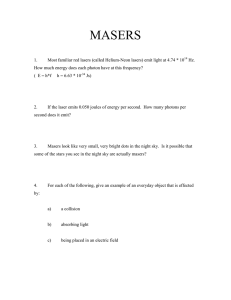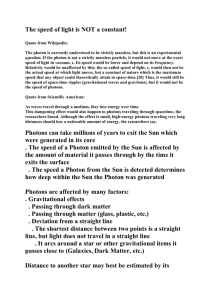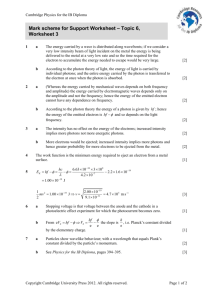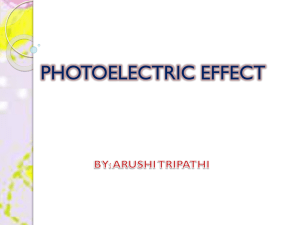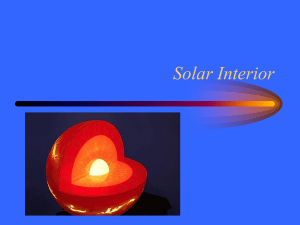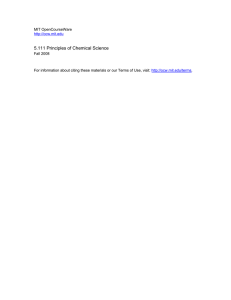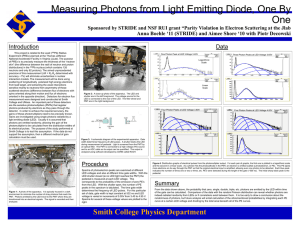PHYSICS 162 Prof: Kim Griest HOMEWORK 7 Due: Monday May 16, 2016
advertisement
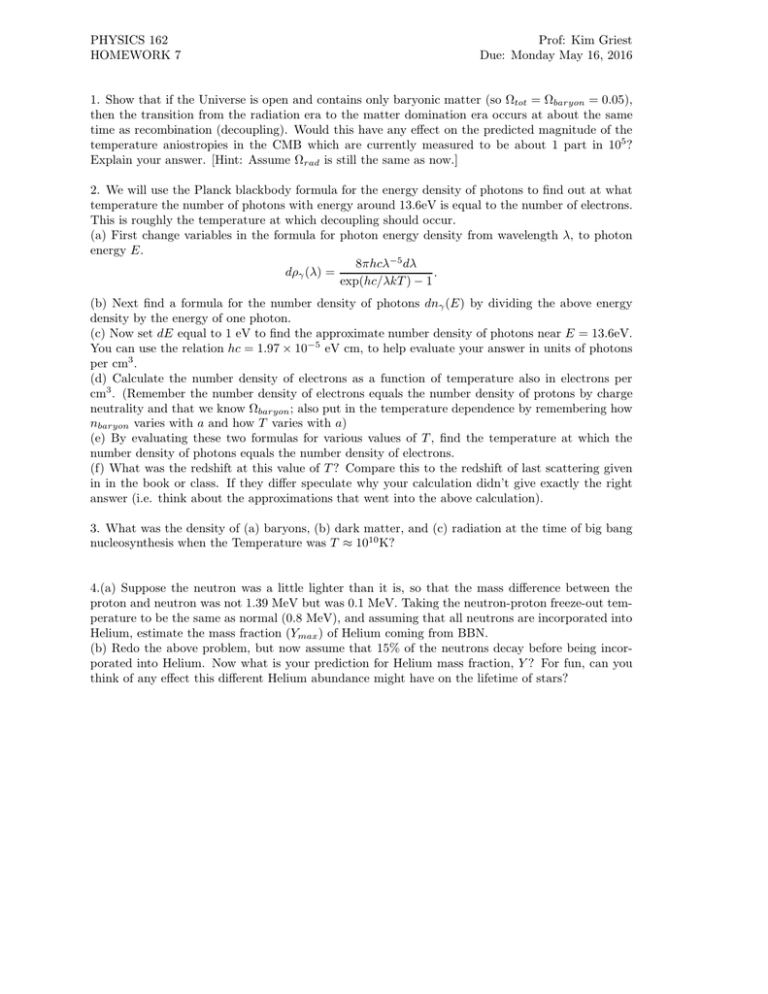
PHYSICS 162 HOMEWORK 7 Prof: Kim Griest Due: Monday May 16, 2016 1. Show that if the Universe is open and contains only baryonic matter (so Ωtot = Ωbaryon = 0.05), then the transition from the radiation era to the matter domination era occurs at about the same time as recombination (decoupling). Would this have any effect on the predicted magnitude of the temperature aniostropies in the CMB which are currently measured to be about 1 part in 105 ? Explain your answer. [Hint: Assume Ωrad is still the same as now.] 2. We will use the Planck blackbody formula for the energy density of photons to find out at what temperature the number of photons with energy around 13.6eV is equal to the number of electrons. This is roughly the temperature at which decoupling should occur. (a) First change variables in the formula for photon energy density from wavelength λ, to photon energy E. 8πhcλ−5 dλ dργ (λ) = . exp(hc/λkT ) − 1 (b) Next find a formula for the number density of photons dnγ (E) by dividing the above energy density by the energy of one photon. (c) Now set dE equal to 1 eV to find the approximate number density of photons near E = 13.6eV. You can use the relation hc = 1.97 × 10−5 eV cm, to help evaluate your answer in units of photons per cm3 . (d) Calculate the number density of electrons as a function of temperature also in electrons per cm3 . (Remember the number density of electrons equals the number density of protons by charge neutrality and that we know Ωbaryon ; also put in the temperature dependence by remembering how nbaryon varies with a and how T varies with a) (e) By evaluating these two formulas for various values of T , find the temperature at which the number density of photons equals the number density of electrons. (f) What was the redshift at this value of T ? Compare this to the redshift of last scattering given in in the book or class. If they differ speculate why your calculation didn’t give exactly the right answer (i.e. think about the approximations that went into the above calculation). 3. What was the density of (a) baryons, (b) dark matter, and (c) radiation at the time of big bang nucleosynthesis when the Temperature was T ≈ 1010 K? 4.(a) Suppose the neutron was a little lighter than it is, so that the mass difference between the proton and neutron was not 1.39 MeV but was 0.1 MeV. Taking the neutron-proton freeze-out temperature to be the same as normal (0.8 MeV), and assuming that all neutrons are incorporated into Helium, estimate the mass fraction (Ymax ) of Helium coming from BBN. (b) Redo the above problem, but now assume that 15% of the neutrons decay before being incorporated into Helium. Now what is your prediction for Helium mass fraction, Y ? For fun, can you think of any effect this different Helium abundance might have on the lifetime of stars?


